Belarus Tour Guide: Ideas for Your Trip!
Beautiful, rare, unique: 10 eco-landmarks of Belarus which are worth seeing
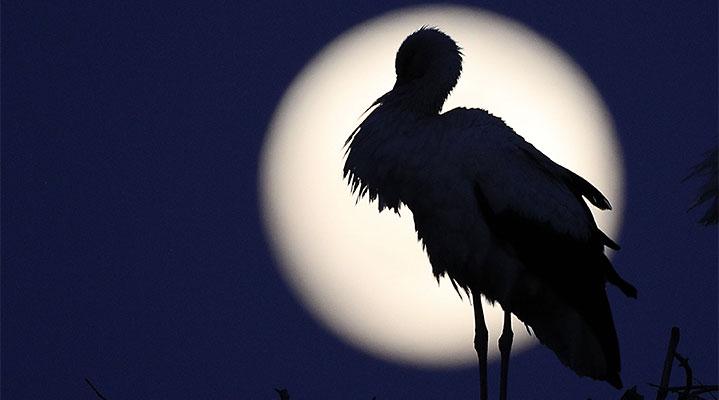
The amazingly beautiful and pristine nature is Belarus asset! Indeed, Belarus has no high mountains or seas which traditionally attract travelers. But the country has many other beautiful places that are truly unique in Europe and even in the world. Find out more about them and we are sure you will want to see them with your own eyes.
Belovezhskaya Pushcha
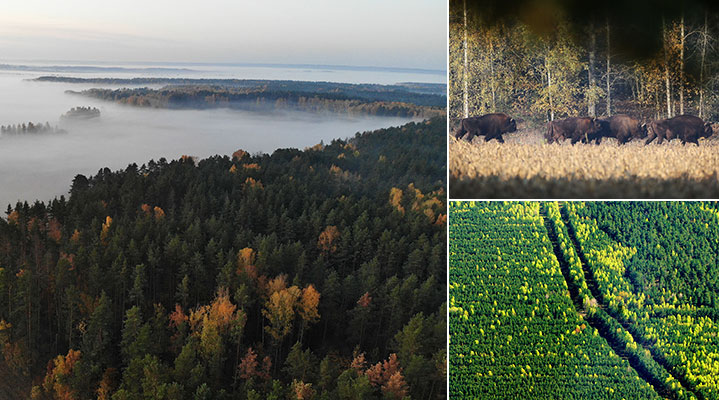 Belovezhskaya Pushcha is a huge pristine forest, one of the oldest in Europe, a UNESCO World Heritage Site, home to the world's largest bison population. Today it spans the territory of two states – Belarus and Poland – and has the highest protection status.
Belovezhskaya Pushcha is a huge pristine forest, one of the oldest in Europe, a UNESCO World Heritage Site, home to the world's largest bison population. Today it spans the territory of two states – Belarus and Poland – and has the highest protection status.
In Belarus, the Belovezhskaya Pushcha National Park occupies an area of 150,083 hectares. It is home to more than 1,000 species of plants, 59 species of mammals and more than 250 species of birds. The pride of Belovezhskaya Pushcha is European bison, the last representative of wild oxes on the continent. There were just 12 animals at the beginning of the 20th century. Over the decades, Belarus restored the bison population, and in 2018 it reported the world’s biggest number of European bison living in the wild – 40% of the world’s bison population. Most of them live in Belovezhskaya Pushcha.
There are many amazing places in the ancient forest besides natural attractions. For example, it is home to the country’s most fairytale place – the residence of the Father Frost which is open all year round.
The Belovezhskaya Pushcha National Park is part of the Brest-Grodno tourist zone that offers 15-day visa-free access for citizens of more than 70 countries.
Braslav Lakes
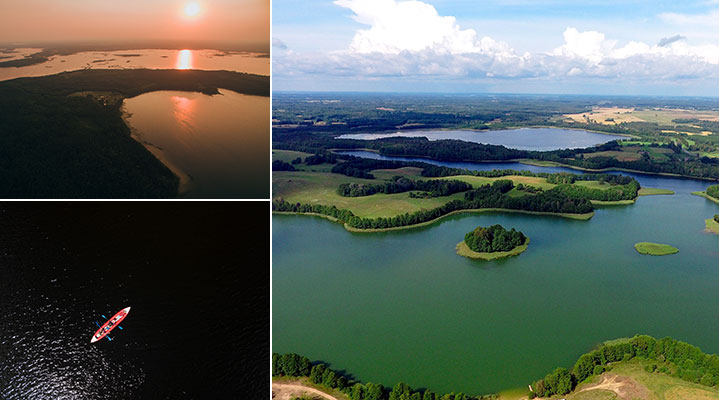 In the north-west of Belarus there is the amazing Braslav Lake District with hundreds of lakes left over from ancient glaciers. Different in shape, area, depth, composition and transparency of water, flora and fauna, they amaze both Belarusians and foreign visitors.
In the north-west of Belarus there is the amazing Braslav Lake District with hundreds of lakes left over from ancient glaciers. Different in shape, area, depth, composition and transparency of water, flora and fauna, they amaze both Belarusians and foreign visitors.
There are 276 (!) large and small lakes in the Braslav Lakes National Park: each has its own natural features and many are associated with unusual historical facts or mysterious legends.
The most famous and the largest lake is Drivyaty. On the shore of this lake stands the ancient city of Braslav, which gave a name to the entire lake district. It is the country's fifth largest lake and the third largest in terms of water resources. Another lake is Drisvyaty. The border between Belarus and Lithuania runs through its water area, and until recently it was used as a cooling water reservoir for the Ignalina Nuclear Power Plant. Yuzhny Voloso Lake is the only place in Belarus where you can find all representatives of relic crustaceans, which attests to the rare purity of the reservoir. Strusto Lake is famous for its island Chaichin which is a home ground for a large population of seagulls and other birds. There is also another... inland lake. We can continue to describe Braslav Lakes for a long time, but it is better to just see them!
For example, you can view the expanses from the highest point of Braslav District – Mayak Hill, which rises 174 meters above sea level and almost 45m relative to the nearby lakes Strusto and Snuda. The observation tower offers a mesmerizing view of the lake. In 2020, the tower will be reconstructed: the height of the new observation deck will be approximately equal to the four-storey house.
Pripyat Polesie
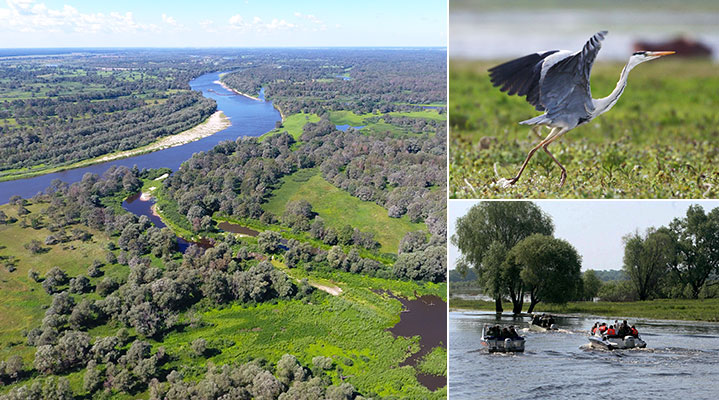 The Sea of Herodotus (or Polesie Sea), a huge water body filled with melted glacial waters, stretched across these places in ancient times. Today it is the valley of the Pripyat River. It is the largest tributary of the Dnieper River in terms of length, water and area. Pripyat Polesie, a picturesque geographical region, is notable not only for its nature but also cultural, historical, and folklore traditions. Even the language of its residents – poleshuks – is special!
The Sea of Herodotus (or Polesie Sea), a huge water body filled with melted glacial waters, stretched across these places in ancient times. Today it is the valley of the Pripyat River. It is the largest tributary of the Dnieper River in terms of length, water and area. Pripyat Polesie, a picturesque geographical region, is notable not only for its nature but also cultural, historical, and folklore traditions. Even the language of its residents – poleshuks – is special!
The Pripyat is often called the Polesie Amazon, or the Amazon of Europe for its beauty and huge expanses of unspoiled nature. During spring floods, the river and its numerous tributaries can turn, if not into the sea as thousands of years ago, then into a truly impressive water surface. The region stretches from 175km to 280km from west to east, and from 83 km to 140km from north to south. Pripyat Polesie is home to iconic natural reserves: the Pripyatsky National Park, more than two dozen sanctuaries of national and local importance, natural monuments.
If you want to see the extraordinary beauty of this land, you should definitely visit the Pripyatsky National Park. It is one of those rare places where you can see such a great diversity of animals, birds, plants, forests, swamps, rivers and lakes! Indeed, there is more than a thousand plant species here (about 50 of them are included in the List of Endangered Species of Belarus), many animal species, including rare ones, like bison, European lynx and hazel dormouse. The national park is home to 256 bird species. No wonder, the park draws bird watchers and nature photographers from all over the world. The park has a nature museum, a safari park, and numerous eco-trails.
Naroch Lake and Blue Lakes
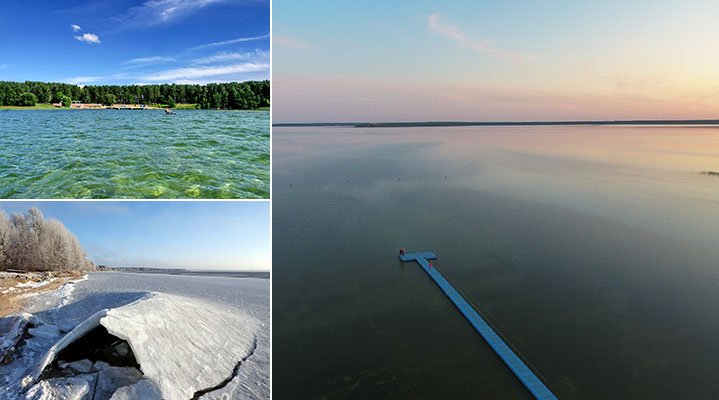 Naroch, Belarus’ biggest lake, is called the Belarusian Sea, the pearl of Belarus. It is truly the country’s largest natural body of water (79.6km2). Its beauty is enchanting, its biodiversity is impressive and its history is captivating. The Naroch area is now a popular resort. The lake is not very deep, thus its water remains warm for about 100 days a year. However, tourists flock to Naroch not only during the bathing season. Flat sandy shores, pine forests, clean air and breathtaking views draw visitors from various countries: more than 100,000 people spend vacations here every year. Moreover, Naroch often tops the ratings of the CIS most popular places for recreation and medical treatment.
Naroch, Belarus’ biggest lake, is called the Belarusian Sea, the pearl of Belarus. It is truly the country’s largest natural body of water (79.6km2). Its beauty is enchanting, its biodiversity is impressive and its history is captivating. The Naroch area is now a popular resort. The lake is not very deep, thus its water remains warm for about 100 days a year. However, tourists flock to Naroch not only during the bathing season. Flat sandy shores, pine forests, clean air and breathtaking views draw visitors from various countries: more than 100,000 people spend vacations here every year. Moreover, Naroch often tops the ratings of the CIS most popular places for recreation and medical treatment.
The lake itself and the area around it have a high conservation status. The Narochansky National Park encompasses not only Naroch, but also a large lake area, which includes dozens of natural monuments of local and national significance. Naroch is a natural habitat for 25 fish species, including eel, burbot and whitefish. The lake is of great importance for waterfowl. For example, it is the only place in Belarus where a relict species of ducks - red-breasted merganser - nestles.
The isthmus between lakes Naroch and Myastro is an amazing and unique place where you can see the country’s smallest river, Skema, that connects two reservoirs. When you drive along the isthmus in spring, you can see an astonishing picture: the ice cover of Naroch is cracking and encroaching the road, while ice hummocks can rise up to 2.5 meters!
Another miracle of Belarus, the natural complex Blue Lakes, is also part of the Narochansky National Park. It encompasses 13 lakes, and each one of them stands out. For example, Glubelka Lake is 17 meters deep. It is located in a pit surrounded by dense forests from all sides. There are no waves here, so the lower layers of the lake have never mixed. Scientists have found that at the depth of 9 meters there is no oxygen or algae, nothing but sulfur bacteria. Myortvoye Lake (translated as ‘a dead lake’) is coal-black due to the muddy bottom. There is a 300-meter cavity with a high concentration of hydrogen sulfide under a 24-meter layer of water.
Blue Lakes are a perfect place for those who want to break away from the hustle and bustle, turn off the phone and enjoy a vacation in the wild. The lakes can be dangerous, therefore people are allowed to swim in only four of them. These are Glublya, Bolduk, Bolshoi Boltik and Maly Boltik.
Berezinsky Biosphere Reserve
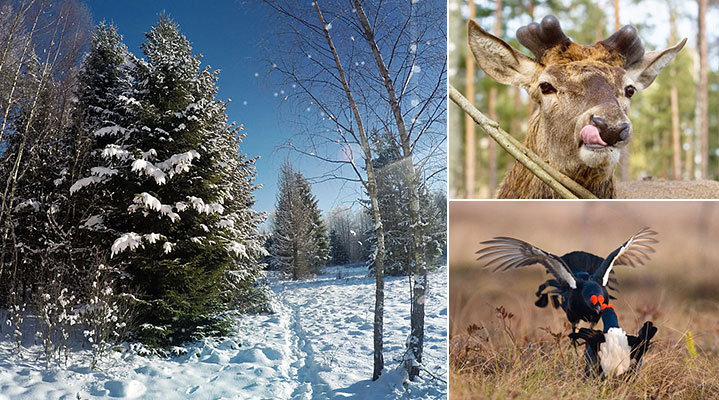 This beautiful and pristine nook of nature has made a name for itself far beyond the borders of Belarus. The Berezinsky Biosphere Reserve is included in the lists of reserves of the highest international status. The landscape of the reserve was shaped by glaciers. Four types of ecosystems coexist here: dense forests, rivers and lakes, meadows and bogs. About 60% of the reserve is covered by bogs, a natural wealth of Belarus, thanks to which the country is called "the lungs of Europe".
This beautiful and pristine nook of nature has made a name for itself far beyond the borders of Belarus. The Berezinsky Biosphere Reserve is included in the lists of reserves of the highest international status. The landscape of the reserve was shaped by glaciers. Four types of ecosystems coexist here: dense forests, rivers and lakes, meadows and bogs. About 60% of the reserve is covered by bogs, a natural wealth of Belarus, thanks to which the country is called "the lungs of Europe".
Today, this is the only place not only in Belarus, but also on the continent, where the famous Europe’s Big Five – the continent’s five most impressive wild mammals – live. These are bison, bear, elk, wolf and lynx. Here you can see all of them. Almost a third of Belarus’ population of brown bears lives in the territory of the reserve.
The history of the reserve began with a project to restore a nearly extinct species - beavers. By the 20th century, they had almost been exterminated in the European part of the Russian Empire. In the 1920s, scientists discovered five beaver families in the upper part of the Berezina River. Thanks to these beavers scientists managed to revive the beaver population in Eastern Europe and beyond the Urals.
The Berezinsky Biosphere Reserve never ceases to surprise its visitors, and it is not only due to its natural wonders. Today it is also the most “mythical place” in Belarus. The reserve has a center of mythological tourism, which includes a mythology museum and the ecological path “In the Land of Myths”. The Lowland Myths festival as well as festivities to celebrate Bolotnik, the patron-symbol of the reserve, and other mythological creatures draw a lot of visitors on a regular basis. In 2019, the reserve hosted the first international festival of Slavic mythology Shlyakh Tsmoka.
Naliboki Forest (Nalibokskaya Pushcha)
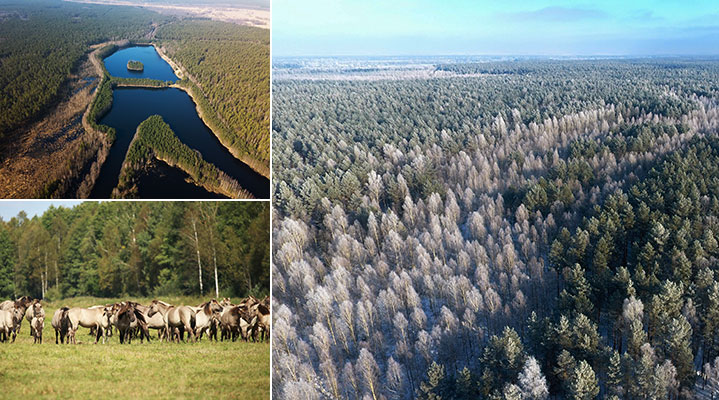 The ancient Naliboki Forest is one of the largest forests of modern Belarus and Eastern Europe. Experts use different criteria to measure its size, which varies from 1,400 km² to 2,400 km². It is not only a unique natural site but also the country’s historical and cultural region that unites Slavic, Baltic and European traditions.
The ancient Naliboki Forest is one of the largest forests of modern Belarus and Eastern Europe. Experts use different criteria to measure its size, which varies from 1,400 km² to 2,400 km². It is not only a unique natural site but also the country’s historical and cultural region that unites Slavic, Baltic and European traditions.
The forest has been preserved in almost pristine condition. Agriculture was unprofitable here, and locals spent many centuries hunting, fishing, forest harvesting, gathering mushrooms and berries, doing crafts. In 1803, the Naliboki Forest was taken over by the Tyshkevich (Tyszkiewicz) family. The new owners were fond of hunting, so they were interested to have many animals in the forest. The reserve was established in the early 20th century, on the initiative of count Benedict Jan Tyshkevich (Benedykt Jan Tyszkiewicz). Later the forest became a state reserve, a hunting reserve.
During the Great Patriotic War, a large unit of more than 20,000 partisans operated in the territory of the forest. There was also a separate Jewish partisan unit of over 3,000 members. The dense forests helped them hide and gear up for combat missions, railroad operations. Forest products helped them survive at that time!
In 2005, the Naliboki Forest was given the status of a national landscape reserve. Today it is one of Belarus’ largest reserves covering a total of 86,892 hectares. Naliboki has an international status of a key botanical area. Almost a quarter of the plants in the forest are medicinal herbs.
The forest is home to Belarus’ only nursery of wood grouse, the disappearing Western European species. In 2019 a joint project was launched with the National Forest Service of the Netherlands to restore a missing element of the Belarusian ecosystems, a large herbivorous group Grazers. Some 150 tarpan-type wild horses were brought to Naliboki. Some time later the big eagle, a globally threatened species, returned to the meadows where horses graze.
Yelnia
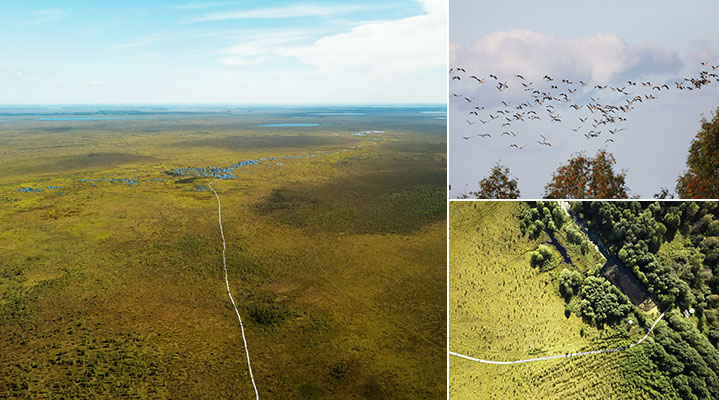 Bogs are called the “lungs of Europe”, “space on earth”, and even the “time machine” capable of carrying anyone thousands of years back. Bogs occupy vast territories and amaze with their spectacular landscapes, sounds, smells, fauna and flora. They are both attractive and frightening with their unpredictability. Most importantly, bogs produce much more oxygen than forests, which is crucial for the ecological balance of the planet. Bogs cover large areas in Belarus. The list of such unique natural sites on the continent includes Yelnia, Belarus’ largest high-moor bog and the fifth largest bog in Europe. It is more than 9,000 years old!
Bogs are called the “lungs of Europe”, “space on earth”, and even the “time machine” capable of carrying anyone thousands of years back. Bogs occupy vast territories and amaze with their spectacular landscapes, sounds, smells, fauna and flora. They are both attractive and frightening with their unpredictability. Most importantly, bogs produce much more oxygen than forests, which is crucial for the ecological balance of the planet. Bogs cover large areas in Belarus. The list of such unique natural sites on the continent includes Yelnia, Belarus’ largest high-moor bog and the fifth largest bog in Europe. It is more than 9,000 years old!
The Yelnia Landscape Reserve is one of the most visited natural sites of the country. Apart from bogs, the area features more than 100 large and small lakes and forests. The reserve is home to 130 species of birds, including such rare ones as the black-throated diver, white-tailed eagle and black stork.
Every September visitors to Yelnia can enjoy an impressively beautiful view. Thousands of gray cranes and tens of thousands of geese of different species gather here before the migration season. This time is also viewed as the most delicious period of the year in the area. It is a cranberry harvest time. Yelnia has Belarus’ largest reserves of this berry. Graceful birds and ruby-colored wild berries are celebrated at the local festival Cranes and Cranberries of Miory District, which welcomes guests from Belarus and abroad.
There are many other reasons to visit this place: the beauty of landscapes, a lot of fresh air combined with the fragrance of plants. There are also mystical sites in Yelnia with compasses going mad and drones getting off the course.
Eco-trails in Yelnia offer interesting excursions and tours. As a Ramsar Site and a key area for birds, Yelnia attracts many bird watchers from all over the world.
Olmany Mires
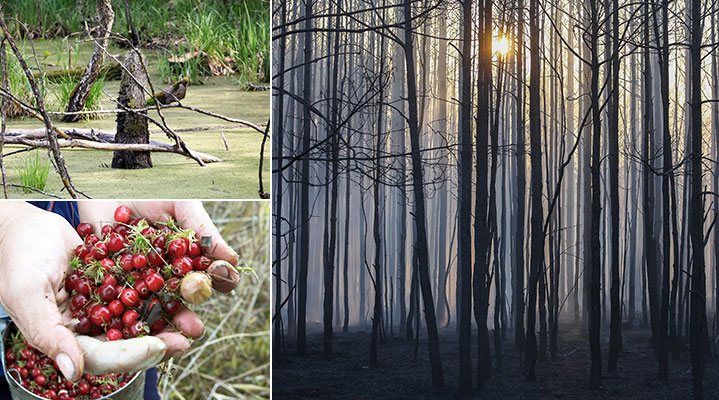 Another unique place in Belarus is the Olmany Mires which began to take shape 12,000 years ago, long before, for instance, the construction of the pyramids in Egypt or the foundation of Rome. Some researchers believe that the name Olmany derives from Alman or Solomon. According to a local legend, many years ago all the men of the village in the land owned by the noble family of the Radziwills went to war. Only women remained. A passerby joked that the remaining women had the same names – only Olgas and Manyas. The name Olmany emerged then.
Another unique place in Belarus is the Olmany Mires which began to take shape 12,000 years ago, long before, for instance, the construction of the pyramids in Egypt or the foundation of Rome. Some researchers believe that the name Olmany derives from Alman or Solomon. According to a local legend, many years ago all the men of the village in the land owned by the noble family of the Radziwills went to war. Only women remained. A passerby joked that the remaining women had the same names – only Olgas and Manyas. The name Olmany emerged then.
The size of the mire territory is impressive – about 100,000 hectares! The territory has stayed in its pristine state until present. Moreover, there is no other swamp in Europe today that combines all types of swamps. The biodiversity is impressive as well! The swamp is home to 22 species of birds, two species of reptiles, three species of mammals, six species of insects, and 12 species of plants from the List of Endangered Species. The Olmany Mires are home to Belarus’ largest population of the greater spotted eagle, which faces the threat of global extinction. Belarus is one of the few countries where the species still lives.
The Olmany Mires are a wildlife sanctuary of national importance, a natural larder that boasts great yields of wild-growing cranberries. And no doubt it is a mysterious place: throughout centuries it could shelter people from the enemy, but it could also take lives.
Tourists are welcome to the Olmany Mires. You can go on an excursion tour along a nature trail – a wooden raised walkway with guard rails and several stops or along an ancient causeway. You can also travel by water – by boat, by canoe, or by raft.
Augustow Canal
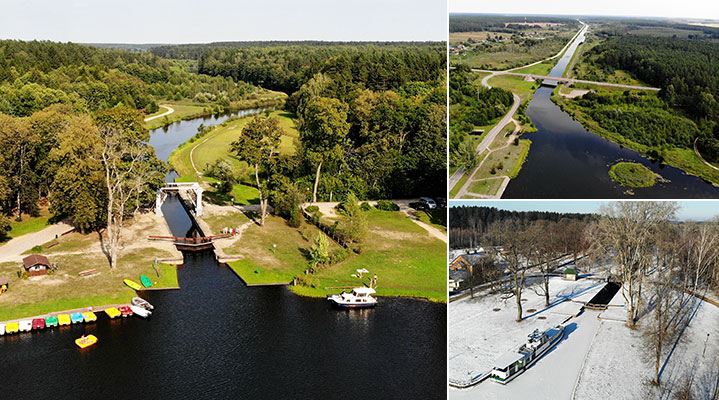 Without an exaggeration the Augustow Canal is another rare place in Europe. There are several reasons the place stands out from the crowd.
Without an exaggeration the Augustow Canal is another rare place in Europe. There are several reasons the place stands out from the crowd.
First of all, it is the high standard of engineering ideas and construction technologies of the 19th century, thanks to which an artificial waterway became the key link to connect the Baltic Sea and the Black Sea. There are only three canals like that in the world which are similar in their complexity and the construction duration: the Caledonian Canal in the UK, the Göta Canal in Sweden, and the Augustow Canal, which is located in Poland and Belarus. Second, the Augustow Canal crosses breathtakingly beautiful places. Even today when the canal is a tourist attraction the guests are always amazed by the nature. The tourism and recreation park Augustow Canal has been created in Belarus. Guests from dozens of countries can visit it without visas.
It offers everything for an active pastime. The park has developed a bunch of water routes, biking routes, and hiking routes that can help discover the true beauty of this unique land.
The Augustow Canal is also attractive because it hosts multiple cultural and sport events all the year round. Those include the Augustow Canal in the Culture of Three Nations, the Sea Festival featuring a race of the most unbelievable handmade vessels, the cycling marathon Neighbors, the water marathon Augustow Canal, Christmas and New Year celebrations with the local Grandfather Frost, the Belarusian cuisine festival Picnic in the Belarusian Way, the folk art festival Augustow Canal Invites Friends, the fairy-tales and folk legends festival At Augustow Dragon’s…
Minsk Sea (Zaslavl Water Reservoir)
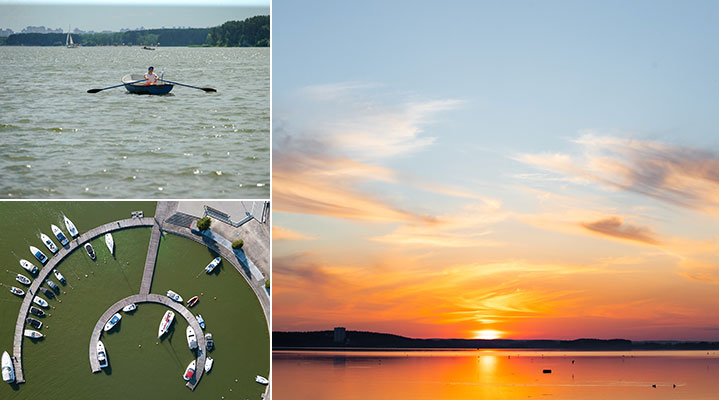 The official name for this body of water located just outside of Minsk is the Zaslavl Water Reservoir. But Belarusians and many visitors have come to know it under a more romantic name – the Minsk Sea.
The official name for this body of water located just outside of Minsk is the Zaslavl Water Reservoir. But Belarusians and many visitors have come to know it under a more romantic name – the Minsk Sea.
It is the country’s second largest and most important artificial water reservoir, which was created in 1956. The key reasons for converting swampy lowlands and bottomlands of several rivers into a water reservoir included efforts to tame flooding in Minsk and the idea to create a resort area near the nation’s capital. Today the Minsk Sea has a huge effect on the water and nature balance of the territory.
But people love it first of all as an excellent place for recreation. There are sanatoriums and recreation centers on the shore as well as sports facilities, yacht clubs, restaurants and cafés, various outlets that rent out gear. The Minsk Sea has six beaches with sand or grass.
Magic dawns and dusks, solitary walks along the edge of the water and swimming along the mirror-like surface, loud entertainment at a beach and silent fishing – everyone will find something to his or her liking here. By the way, one of the 11 artificial islands in the Minsk Sea is called the Love Island, so people in love should also come to visit this place.







 print version
print version make home page
make home page add to bookmarks
add to bookmarks
